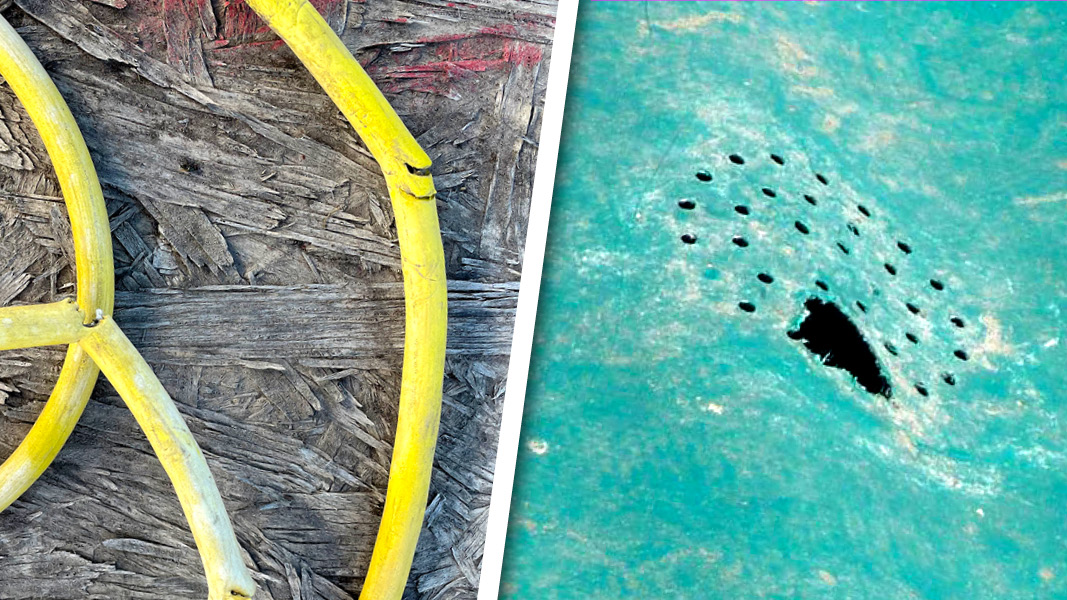Top: Damage caused by coyote (left) and rodent (right). Photos courtesy Engineered Compost Systems
Nuisance vectors at composting facilities come in the form of insects, rodents, coyotes, and birds. “The most common nuisance reports we receive from clients are of vectors damaging items made of soft materials,” notes Tim O’Neill, president of Engineered Compost Systems (ECS). “We have heard of coyotes in Oregon chewing on temperature probe cables, birds in California pecking through pressure sensor cables, and rats in Washington chewing through fabric covers. To give you an idea of how frequently these occur, we supply repair services and parts replacement to dozens of composting facilities — each with from 10 to 150 sensors — and we hear of vector-caused damage about once every year or two. In the case of the coyotes, the answer was to clear the nearby scrub brush to deprive them of cover. In the case of the birds, installing chicken wire over the fixed pressure cable stopped that problem.”
Vectors are drawn to composting facilities primarily by sources of food, and to a much smaller extent, to sit on top of a warm pile in cool weather. Freshly tipped food waste left too long tends to attract vectors. Best practices for handing food waste — not just to avoid vectors, but also odors — are to do the following, adds O’Neill: Incorporate food waste into a mix with ground green waste and/or ground wood waste on the same day that it is received; regular scraping or sweeping of the tip floor; keeping floor drains clear; not allowing any food waste to accumulate around or in preprocessing equipment such as mixers, under sorting conveyors, etc.; and to move the fresh mix into a controlled active phase composting zone within 24 hours.
Vector access to food waste once in the composting piles is through the surfaces. Creating an extended compost pile or using concrete bunkers to contain the piles reduces the potential exposed surface area to the top surface and front slope of the pile. “It is standard practice to cover these surfaces with >12-inches of biolayer material consisting of compost that has been through the active phase or some other non-putrescible organic material,” he explains. “The biolayer cover insulates the pile so that the food-bearing mix underneath is not only covered and hard to reach, but is also rapidly heated to temperatures >120°F. These elevated temperatures effectively discourage foraging.”
Uncontrolled leachate can be another vector attractor as it provides prime breeding grounds for bug larvae (mostly flies). The first step in controlling leachate is to minimize the volume created, starting with minimizing the total footprint of the active compositing pile. One interesting takeaway from years of building aerated composting systems, says O’Neill, is that “surprisingly little water percolates all the way through the pile to the floor. This is because the pile is constantly being dried out by the combination of bio-oxidative heating and forced aeration; the compost generally has unused water holding capacity that absorbs precipitation.” A final tip is to design the grades and collection points of the working surfaces adjacent to the piles to eliminate run-on or run-off water. This helps prevent the commingling of storm water with leachate, keeping the total volume of high nutrient water to a minimum. More tips can be found in this article written by O’Neill on the ECS website.













